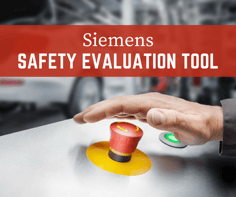 Safety is one of the core components upon which an industrial business depends. Apart from ensuring the protection of the workforce, safe machines can bring positive changes in the operating efficiency and thus the competitiveness of a company. The entire process of guaranteeing maximum safety is a long & complex one but is built upon improving functional safety. Devices ranging from control systems to protection apparatus must function correctly in order to ensure long-term continuity and safety for workers.
Safety is one of the core components upon which an industrial business depends. Apart from ensuring the protection of the workforce, safe machines can bring positive changes in the operating efficiency and thus the competitiveness of a company. The entire process of guaranteeing maximum safety is a long & complex one but is built upon improving functional safety. Devices ranging from control systems to protection apparatus must function correctly in order to ensure long-term continuity and safety for workers.
In order to ensure that plants are running as safely as possible, the European Machinery Directive requires the company to provide a comprehensive analysis of their potential risks. Once this analysis is carried out, all the underlying risks must be minimized by implementing structural, organizational, and technical measures.
According to the Machine Directive, the necessary technical documentation required to ensure minimal risks include e-plans, engineering drawings, risk assessment, etc. The Siemens Safety Evaluation Tools (SET) lets you meet this goal directly. The TUV-tested online tool guides the user in a step-by-step manner, starting from specification, right up to the determination of the attained safety integrity. As a result, you obtain a standard-compliant report, completely mergeable with your documentation as proof of safety.
At a glance, SET provides:
Step-by-Step Preparation of Compliant Machine Documentation
The online tool guides you completely through the process of result report preparation in a targeted manner. A step-by-step approach is followed by SET:
The tool allows you to select the standard on which the entire calculations will be dependent. These include:
Software for standard-compliant machine evaluations
 The Safety Evaluation Tool provides an easy way to create safety certifications. After risk assessment & planning of the safety project, technical safety measures must be specified. A safety function must be defined for every risk factor and assigned either to the Safety Integrity Level (SIL) or the Performance Level. The function is then developed using a sensor, logic or an actuator.
The Safety Evaluation Tool provides an easy way to create safety certifications. After risk assessment & planning of the safety project, technical safety measures must be specified. A safety function must be defined for every risk factor and assigned either to the Safety Integrity Level (SIL) or the Performance Level. The function is then developed using a sensor, logic or an actuator.
Using SET, the machine manufacturer can implement safety-related values in its applications in compliance with the latest standards. During this process, the SET sample library offers invaluable help for creating the safety function. After achieving the PL or SIL, a standard-compliant report is generated, which acts as a proof of documentation.
Uniform XML Data Format
The safety-related values differed in format & scope and were entirely dependent on the manufacturer or the calculation tool in use. There was no uniform way to exchange data. The German Exchange Federation stepped in to solve this issue of incompatibility, bringing several manufacturers into the fold of a uniform electronic exchange format.
The VDMA specification 66413 on functional safety outlined this uniform format for safety-related values of components. The new data interface has simplified the process of maintaining documentation, especially when several different manufacturers are involved.
As the first tool of this kind, the Safety Evaluation Tool includes this standard data interface and thereby gives users the capability to import safety-related values from other manufacturers in XML format. This prevents any errors due to manual input. If required, it is possible to download Siemens safety-related values in XML format from the SET website.
Interested in learning more, connect with an ACD expert!
You may also be interested in reading:

